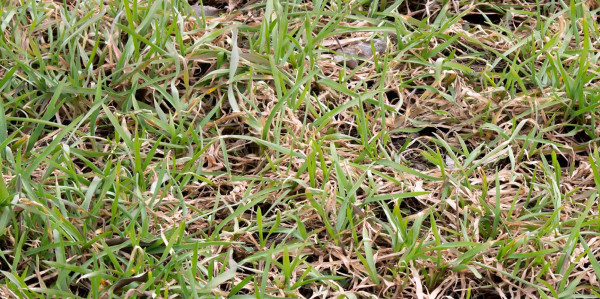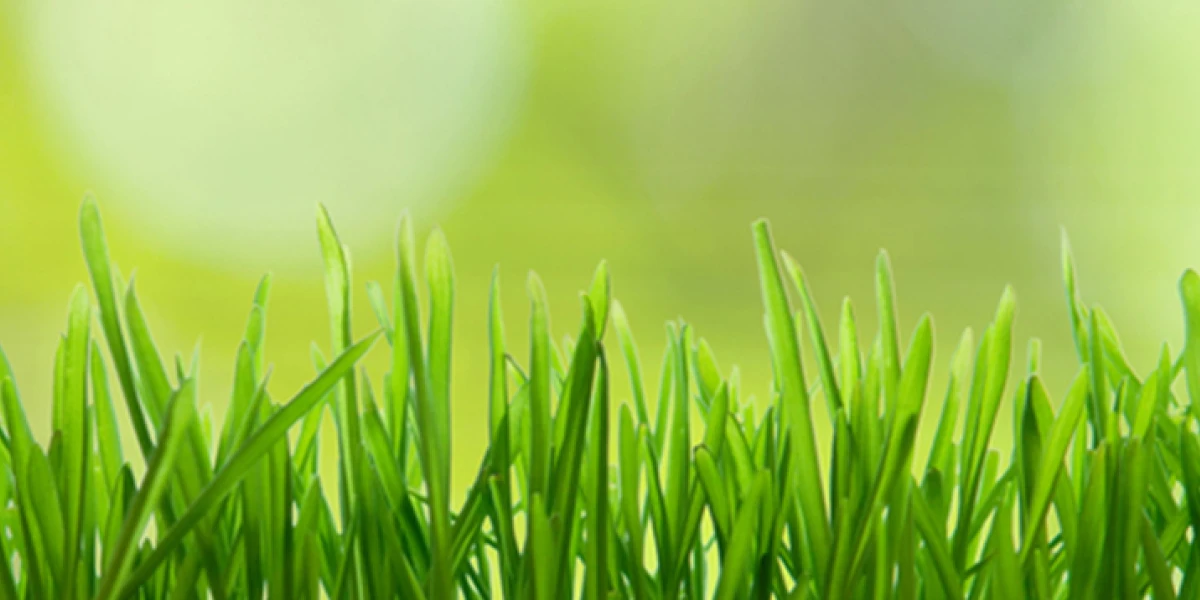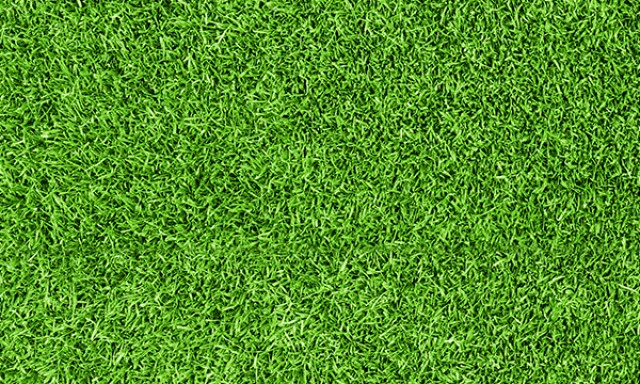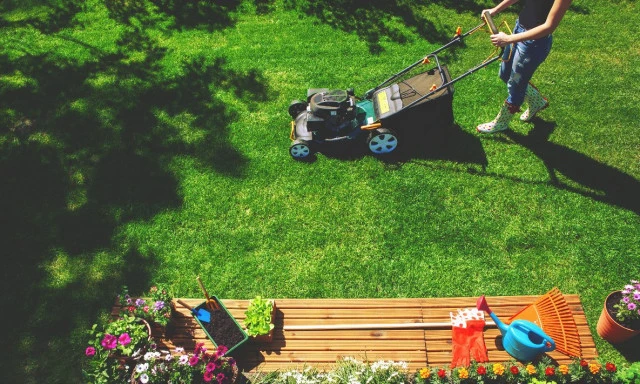Get a great lawn year–round with Kiwicare
A lush, healthy lawn doesn’t happen by accident, it takes a little care and consistency. Think of lawn care like going to the gym: it’s easier to maintain a healthy lawn than to fix one that’s already struggling. By spending an hour here and there each month treating for weeds, pests, and lawn diseases, you’ll prevent problems before they start.
The real secret to a beautiful lawn is knowing what to treat and when. Each season brings its own challenges, and opportunities for your lawn. For example did you know:
- Weeds are best controlled in autumn and spring when they’re actively growing;
- Grass grub and porina moth are most active between January and April, so that’s the key time for treatment; and
- Lawn fertiliser should be applied every three to four months to keep grass thick, green, and resilient against moss and weed growth.
One of the most common questions we hear is: How long should you wait between treatments? Timing is everything in lawn care — and that’s where Kiwicare’s expertise comes in.
To make things easy, our lawn care experts have created a free, printable Lawn Maintenance Calendar. It’s your month–by–month guide to feeding, weeding, and protecting your lawn so you can enjoy lush, green grass all year round.
Download your Kiwicare Lawn Maintenance Calendar below and start your journey to a healthy, beautiful lawn today.
Lawn Maintenance Tips & Guidance
When it comes to lawn care, you'll hear and see a number of terms thrown around, but what do they mean, what products should you use and what should you look out for. Click the + icon for each subject below to learn more and get one step closer to a thick, lush lawn.
- Weed Control
Healthy thick swards of lawn grass are resistant to disease and out-compete weeds, reducing the need for applications of herbicide. Also, herbicides work best on growing lawns which have adequate nutrient.
- Use LawnPro Lawn Thickener to ensure a healthy sward.
- LawnPro Turfclean and LawnPro All–in–1 have been formulated for the control of the widest range of broadleaf weeds in New Zealand lawns. The combination of 3 active ingredients is balanced to ensure the most common weeds in New Zealand lawns are controlled without risk of burning the fine lawn grasses grown as lawns in New Zealand.
- It is good weed control practice to use LawnPro Turfclean as routine and alternate it with LawnPro Prickle and Hydrocotyle every 3rd or 4th treatment.
- For lawns prone to Onehunga prickle weed apply LawnPro Prickle and Hydrocotyle before the weed flowers and produces its prickly seeds.
- In spring and autumn apply LawnPro Mossclear to kill moss and its spores. Then scarify to remove dead moss and apply LawnPro Lawn Thickener to raise pH, thicken your lawn and make the area unsuitable to moss growth.
If you have a 100% Tall Fescue or 100% Turf Ryegrass lawn and are looking to prevent or kill weeds like Poa, Summer Grass, Chickweed, Cleavers, Fumitory, Redroot Sow, Thistle, Spurrey Summer Grass, and Wild Portulaca then treat your lawn with LawnPro Ultra Poa Lawn Weed Control in spring or autumn to keep your turf pristine.
- Over–Seeding & Thickening Your Lawn
Have you been left with bare patches in your lawn after a bout of tough weeds, pest problems, or disease, or is your lawn looking a bit thin on the ground after treatment? It's best to get those holes in your lawn fixed quickly. Leaving them bare, or your grass thinned out allows opportunity for lawn weeds and moss to establish themselves and spread throughout your lawn.
Over–seeding also known as over–sowing is when you sow / plant new lawn seed, into an already existing lawn to thicken it up. It's fairly easy to do, you just need to select the right product for the job:
- LawnPro Smart Patch Mix:Is ideal for fixing bare patches as it has built in fertiliser, water storage granules and soil improver. Find out more about LawnPro Smart Patch Mix and how to sow it.
- LawnPro Lawn Thickener:Is great for jobs where your lawn needs to thickened up, to get that lush green look and keep weeds at bay. LawnPro Lawn Thickeneris the fast and easy way to thicken, fertilise and green lawns all year–round.
- Fertilising for a Healthy Lawn
Lawns are areas of the garden that require an input of nutrients because nutrients are constantly removed through mowing. Lawn grass needs a balance of the three main nutrients; Nitrogen (N), Phosphorous (P) and Potassium (K) plus a variety of micro–nutrients including iron and sulphur to achieve appropriate level for greening, healthy and sustained growth, but not straggly rapid growth. If the balance of nutrients becomes uneven, or soil becomes depleted your lawn may become more susceptible to weeds, most and pest. It you were to try to add a fertiliser that's too high in nitrogen for example you end up with a fast growing lawn that needs to be mowed more often, that looks scraggly Balance is important, that's why Kiwicare has developed a range of specialist lawn fertilisers to suit all needs.
- LawnPro Natural Boost: Granular fertiliser formulated with natural compounds that greens and feeds your lawn, while improving the water holding capacity of your soil.
- LawnPro Green & Grow: Compound granular fertiliser formulated to green and strengthen your lawn as well as condition your soil.
LawnPro Ultra Year Round Lawn Fertiliser: An intensive, fast–acting liquid fertiliser for short term, intense lawn greening
LawnPro Ultra Lawn Greener: Golf–course grade and rapid action lawn fertiliser mini granules to build strong roots and encourage lush, green lawn growth all year round.
- Dethatching
- The best time to dethatch your whole lawn is in late summer / early autumn when the grass is actively growing. Unless the lawn is small a power dethatcher / scarifier is the best manual option but can damage your lawn for a period. You can rent a power dethatcher from most garden or hire centres.
- Alternatively and with less effort, you can naturally reduce thatch by applying LawnPro D-Thatch to feed the micro–organisms that break the thatch down. Dethatch is also in LawnPro Turfclean & Green Rapid+ so you can weed, feed and dethatch your lawn in one easy application. LawnPro D–Thatch is the safer, more natural option.
- Pest Control
Several insect pests will attack lawn grasses – e.g. grass grub eat the grass roots, porina caterpillar eat grass crowns and armywrom feed on new shoots and foilage.
- Apply LawnPro Protect granules in late summer and autumn to prevent lawn damage.
- At the first sign of damage apply LawnPro Protect granules.
- Disease Control
Most lawn diseases are caused by fungi, although grass species vary in their susceptibility to particular diseases. Wet lawns are most susceptible to disease.
- At first signs of disease treat with LawnPro Fungus Control For Lawns then LawnPro Mossclear.

- Watering
Lush green healthy lawns need water for growth. However, the water is taken up by roots and not leaves; wet leaves promote disease and shallow water evaporates off before roots can absorb it. When required water should be applied so that it seeps deep where deep rooting grasses can reach it and it will not evaporate off.
- When required, water lawns thoroughly in the morning. A thorough watering once or twice a week is preferable to light watering frequently.
- Mowing
Mowing gives an even attractive tidy lawn. However, it is important not to mow lawns too short.
- Fine browntop / fescue lawns mow at approximately 20mm height.
- Ryegrass lawns mow at approximately 30 – 35mm height.
- Raise the mower height another notch for the final cut of the year in autumn / winter.
Mulching lawns (leaving the clippings) is not recommended if the lawn has become too long; the dead grass becomes a place for disease spores and weed seeds to survive and although the mulch will suppress some weeds it will also suppress grasses. Read more about mulching on our blog "To Mulch or Not To Mulch".
- Collect clippings when mowing long, damp or diseased lawns.
Mulching when trimming adds nutrients back into the lawn and can help soil structure.
- Mulch only when trimming the lawn and small amounts of grass are added to the thatch under the grass.
Blunt lawnmower blades damage the grass leaves leaving ragged edges that will brown off and are more susceptible to disease.
- Ensure your lawnmower blades are sharp and clean.


